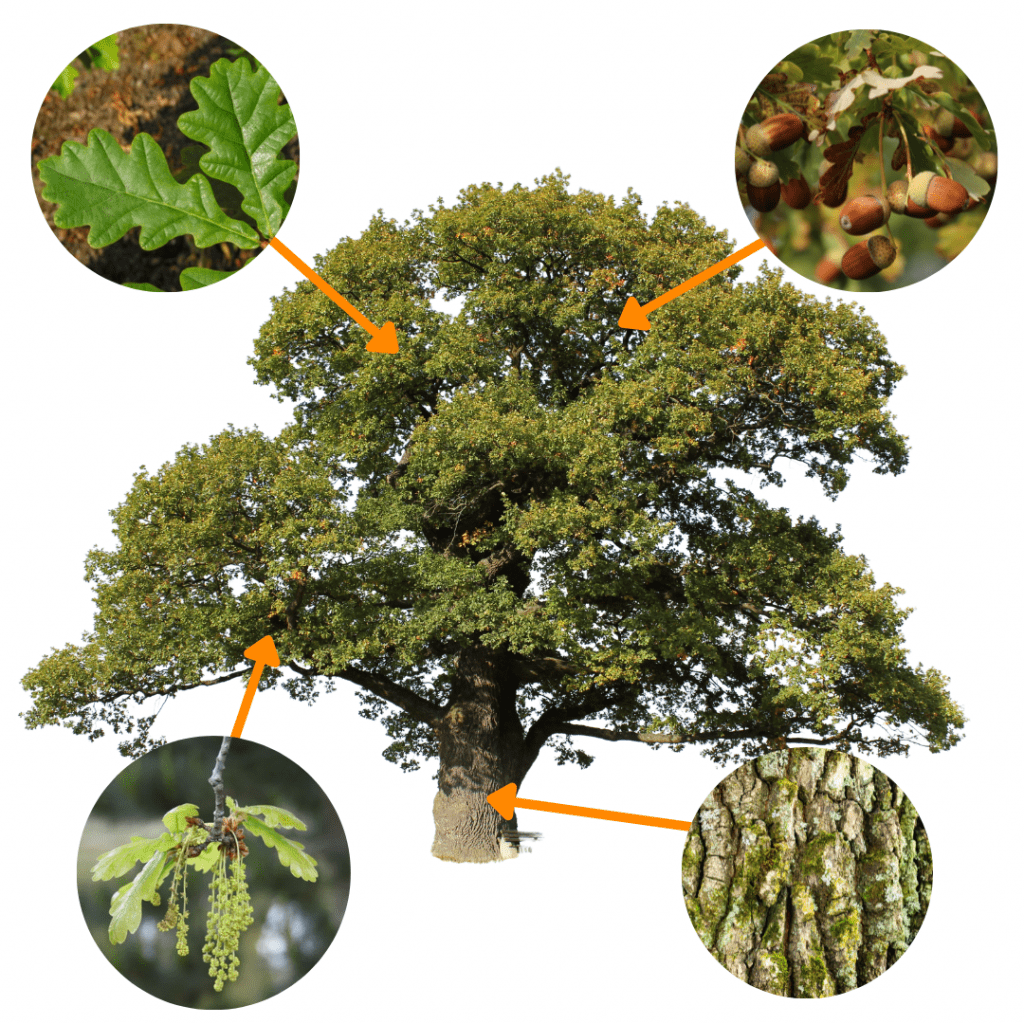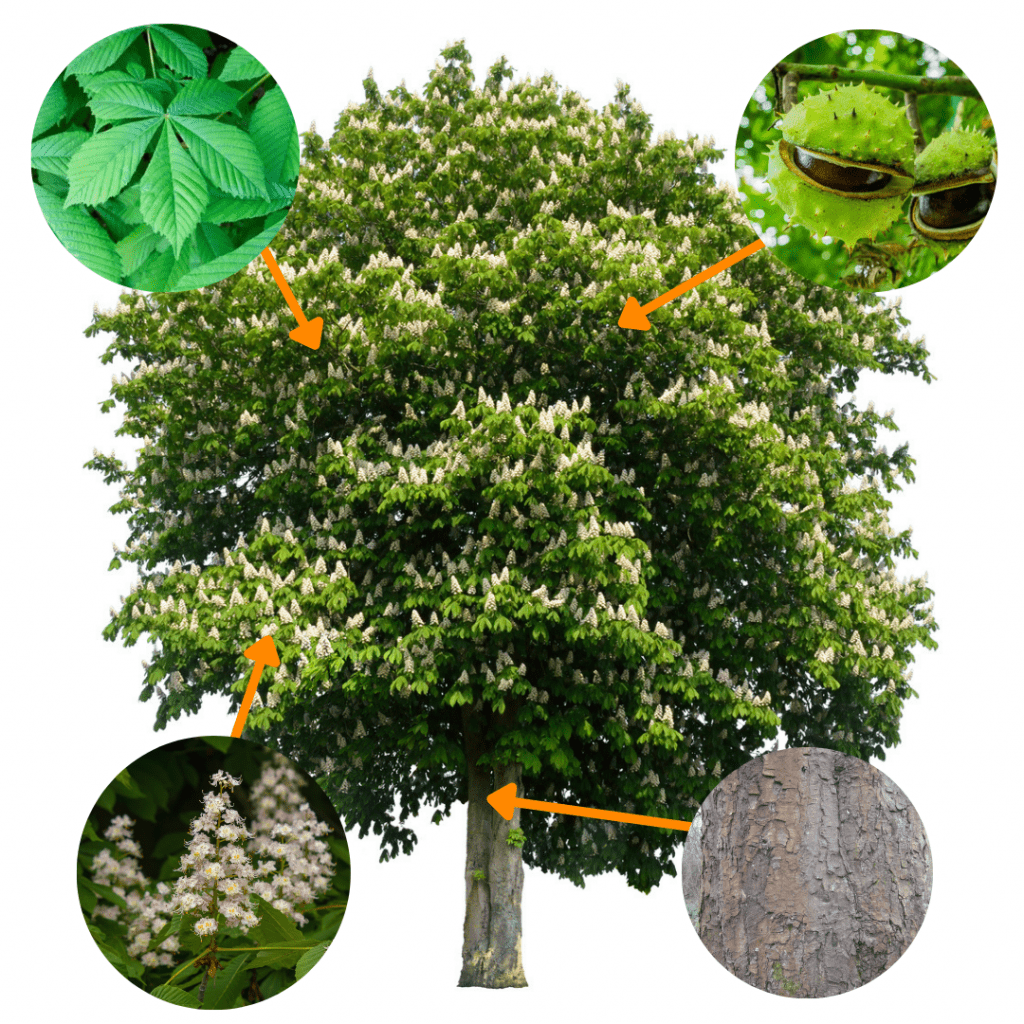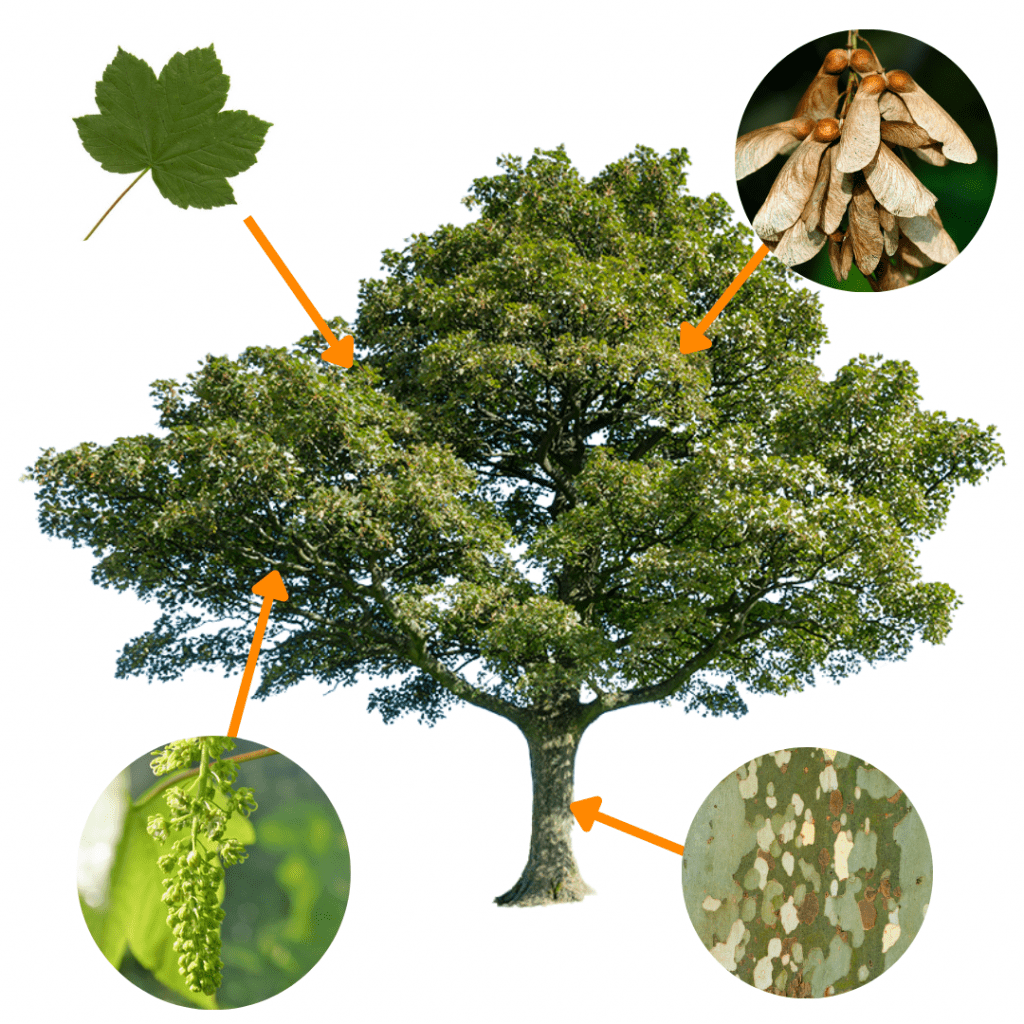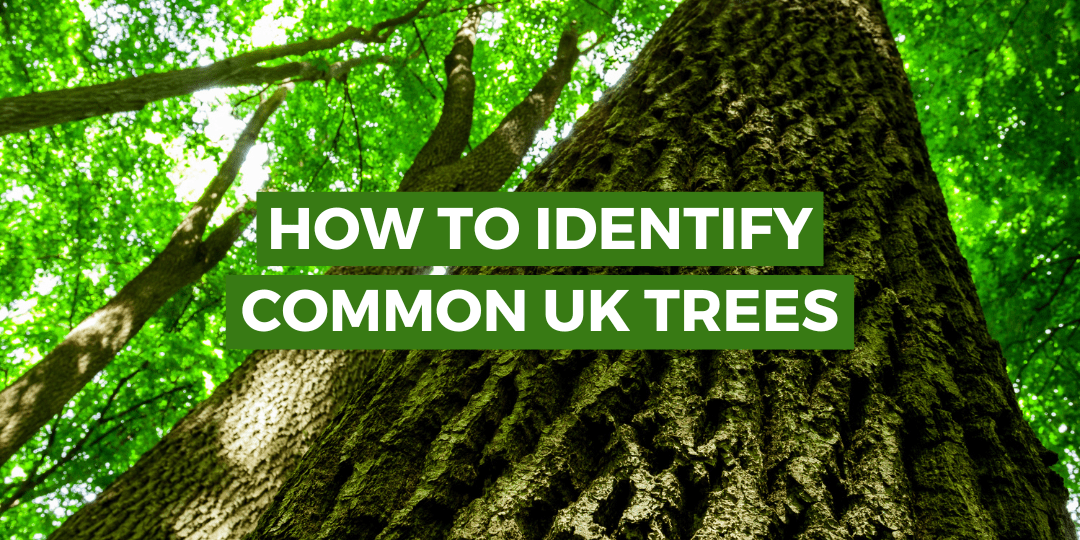Last Updated on August 24, 2022 by Ella Orrock
Trees are truly beautiful parts of the natural environment, but they are also wonderfully efficient machines — continuously working to keep the planet healthy. Over 73,000 different species take up over 36% of the earth’s landscape including parks, fields, paths and gardens. You’re bound to come across many of these varieties in your lifetime. If you’re looking to improve your knowledge of these natural giants or are just wondering what trees you may have in your garden, you’ve come to the right place!
There are 7 important characteristics to consider when trying to identify a tree and understanding them will make you a professional tree spotter in no time:
- Leaves
- Bark
- Flowers
- Fruit
- Shape
- Environment
English, Oak

We start with the most common tree found in the UK – the English Oak tree. Throughout history, Oak trees have been a symbol of royalty, wisdom and strength. Nurturing up to 2,300 wildlife species they provide important spaces for shelter, eating and breeding.
English Oak trees are deciduous, meaning they lose their leaves in Autumn and regrow them in spring. The Oak tree has a very distinctive leaf shape and it’s a great way of identifying it. The leaves are mainly green in the warmer months, longer than wide and feature 5 or 6 deep, rounded lobes.
Despite their distinctive leaf shape, the best way to identify this tree is to look at its trunk. The bark features deep fissures and ridges that give it a unique scaly look. At the base of the trunk, you may see a variety of moss and fungus growth.
Around springtime, the English Oak will begin to flower. As the frost-covered branches begin to thaw, long yellow hanging catkins begin to grow. These are the male flowers of the tree and distribute pollen to the environment. The female flowers are small and red and sit on short stalks called peduncles.
The fruit of the Oak tree is a well-known nut called the Acorn. Acorns don’t grow until the tree reaches around 40 years old and is its most productive from 80-120 years. If the female flowers were pollinated correctly during the summer months, they will begin to grow Acorns. Acorns typically take a year to fully grow and reach maturity after 2 years. The best time to collect these nuts is around Autumn.
The shape of an Oak tree features a broad, spreading crown with thick branches and a trunk that shortens with maturity to extend its life span. They are most commonly found in central and southern Britain with over 121 million in the UK alone.
Horse, Chestnut

In 2017, the Horse chestnut tree was voted the UK’s favourite tree. Also known as the Conker tree, it surged ahead of the other contenders, securing more than a quarter of all votes cast. So what makes this tree so popular and how can you identify it?
The Horse Chestnut is another deciduous tree that features unique leaves. Their colour varies from light to dark green and has 5-7 pointed leaflets all connected by a central stem with slightly pointed tips. The trunk of a Horse Chestnut tree is thin and smooth with minimal fissures.
This tree begins to flower in May and is known as panicle by botanists. 3 to 6 flowers grow on each branch with the branches being longer at the bottom to form a cone-like shape. The flowers are a mix of male and female with the male being at the top and female at the bottom, and those in the middle are mixed.
At around the age of 12, Horse chestnut trees begin to grow fruit known as conkers. Conkers have been notoriously known throughout history for their part in a classic game for children. They grow when the female flowers have been pollinated and mature throughout autumn and feature a green spiky casing. By winter they will begin to drop and you can find them around the base of the Horse Chestnut tree.
The shape of the Horse Chestnut is long and upright with minimal spreading. There are around 500,000 in the UK mainly found in parks, gardens, streets and village greens.
Alder

The Alder tree is native throughout Europe and grows in a variety of habitats across the UK. Its strong trunks thrive in moist, swamp-like environments and can be found near rivers, ponds and lakes.
Its purple leaf buds form on a long stem and once matured long, dark green, leathery leaves grow. These are round in shape with serrated edges. The leaf tip is never pointed and is often indented. Alder trees are broadly conical in shape and have dark and fissured bark. Twigs are light brown with orange spots, and young twigs are sticky.
In early spring, the flowers appear just before the leaves. On the same tree, female and male flowers are born. When the pollen is shed, the male flower turns yellow (about 5-10 cm long). It is a very small purple catkin that will eventually turn into a cone containing seeds.
Once pollinated by wind, the female catkins gradually become woody and appear as tiny, cone-like fruits in winter. They open up to release their seeds, which are dispersed by wind and water.
Sycamore

The sycamore tree is a deciduous tree that can grow up to 20-35 metres tall. The sycamore tree is known as one of the fastest-growing trees in North America and Europe. Its branches form a broad, domed crown.
The leaves of a Sycamore tree are very easy to spot as they look very similar to a maple leaf. They grow alternating to each other on branches and have coarse teeth. The underside of the leaves is coated with small, coarse, white hairs and in early autumn the leaves begin to turn yellow and brown as they fall off. A great identifier is a black tar mark that many of the leaves may possess, as they mature the mark will become more pronounced.
The bark of a young Sycamore is thin and flaky and peels in patches. The mottled appearance gives the tree great camouflage and makes them easy to identify. An older Sycamore’s bark is no longer white however sheds in thick patches.
Similar to the Horse Chestnut, Sycamore’s flowers grow in panicles with a mix of male and female flowers. The cluster of flowers hang on a long central stem and grow all over the tree’s canopy.
If you are trying to identify this tree in early Autumn, you will notice its flowers have transformed into a unique fruit known as Samaras. These have two wings that help them disperse through the wind to help the offspring colonise new areas.








It’s a pity you do not make a kindling machine or attachment like the ones you see on youtube uk,a low cost machine for own use would be good,I have a forestmaster logsplitter,but have seen an attachment you can get only in Germany like a mincer that goes onto machine,apart from homemade ones no one in Britain does a domestic one (for palletwood 9inch long approx,what a shame perhaps some engineering company may come up with one now energy prices are sky high??
Hi Joe, we actually do have a few options for creating kindling with the machines we have available on our website. You can check out a full list of them on our dedicated blog post : https://forest-master.com/2020/10/02/split-wood-kindling-with-log-splitter/
Too good works